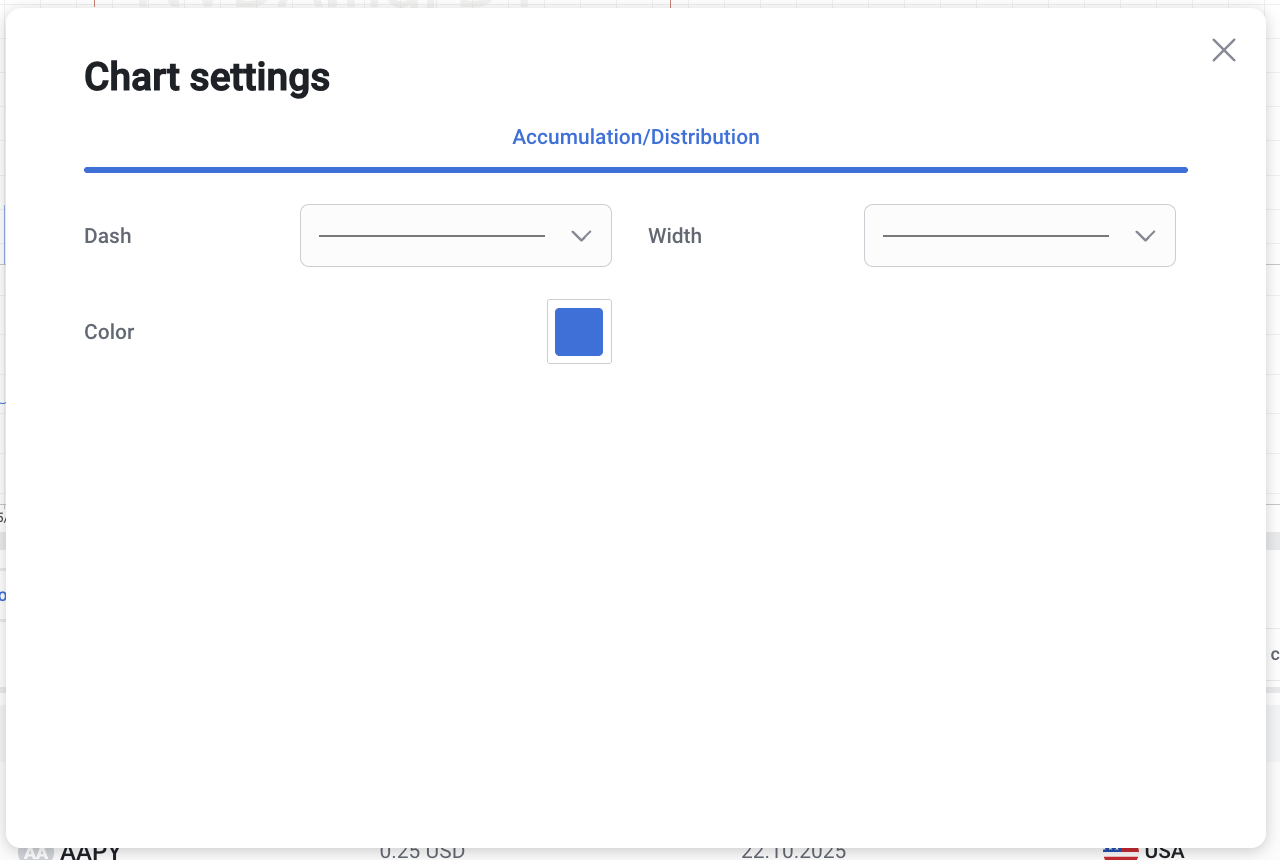Overview
Accumulation/distribution is a cumulative indicator that uses volume and price to assess whether a stock is being accumulated or distributed. The accumulation/distribution measure seeks to identify divergences between the stock price and volume flow. This provides insight into how strong a trend is. If the price is rising but the indicator is falling this indicates that buying or accumulation volume may not be enough to support the price rise and a price decline could be forthcoming.

KEY TAKEWAYS
- The accumulation/distribution line gauges supply and demand by looking at where the price closed within the period's range, and then multiplying that by volume.
- The A/D indicator is cumulative, meaning one period's value is added or subtracted from the last.
- A rising A/D line helps confirm a rising price trend.
- A falling A/D line helps confirm a price downtrend.
- If the price is rising but A/D is falling, it signals underlying weakness and a potential decline in price.
- If the price of an asset is falling but A/D is rising, it signals underlying strength and the price may start to rise.
Description
The accumulation/distribution line helps to show how supply and demand factors are influencing price. A/D can move in the same direction as price changes or it may move in the opposite direction.
The multiplier in the calculation provides a gauge for how strong the buying or selling was during a particular period. It does this by determining whether the price closed in the upper or lower portion of its range. This is then multiplied by the volume. Therefore, when a stock closes near the high of the period's range, and has high volume, that will result in a large A/D jump. If the price finishes near the high of the range but volume is low, the A/D will not move up as much. If volume is high but the price finishes more toward the middle of the range, the A/D will also not move up as much.
The same concepts apply when the price closes in the lower portion of the period's price range. Both volume and where the price closes within the period's range determine how much the A/D will decline by.
The accumulation/distribution line is used to help assess price trends and potentially spot forthcoming reversals.
To find out more about this indicator and it`s trading signals click here.
Settings in the chart

